Church History
The church building and its history
The origins of the church are far from clear, as the building has evolved over the centuries and shows work of many periods. From what we can deduce from the structure itself and from what little documentary evidence is available, some of the landmarks in the church’s long history are as follows.
The 1000s. The core of the nave dates from this time. We know that Eudo Dapifer who held the northern manor had a priest in 1086, but no mention is made of a church. In the north wall, we see layered masonry, a simple buttressed north-west corner and the sides of an 11th century doorway, the latter two features incorporating re-used Roman bricks and tiles which may have been made in the 200s AD or earlier.
The mid 1200s. The church appears to have received a new chancel. Its north-east and south-west windows, although heavily restored, are of this date, as is the piscina.
C 1310-1340. The south aisle was added. Its eastern section may have incorporated an earlier transept, as is seen in its decorated style windows and south doorway. The chancel and south aisle may have been given by the Bassingbourne family, who gave their name to the now demolished Bassingbourne Hall, and also to the Lady Chapel.
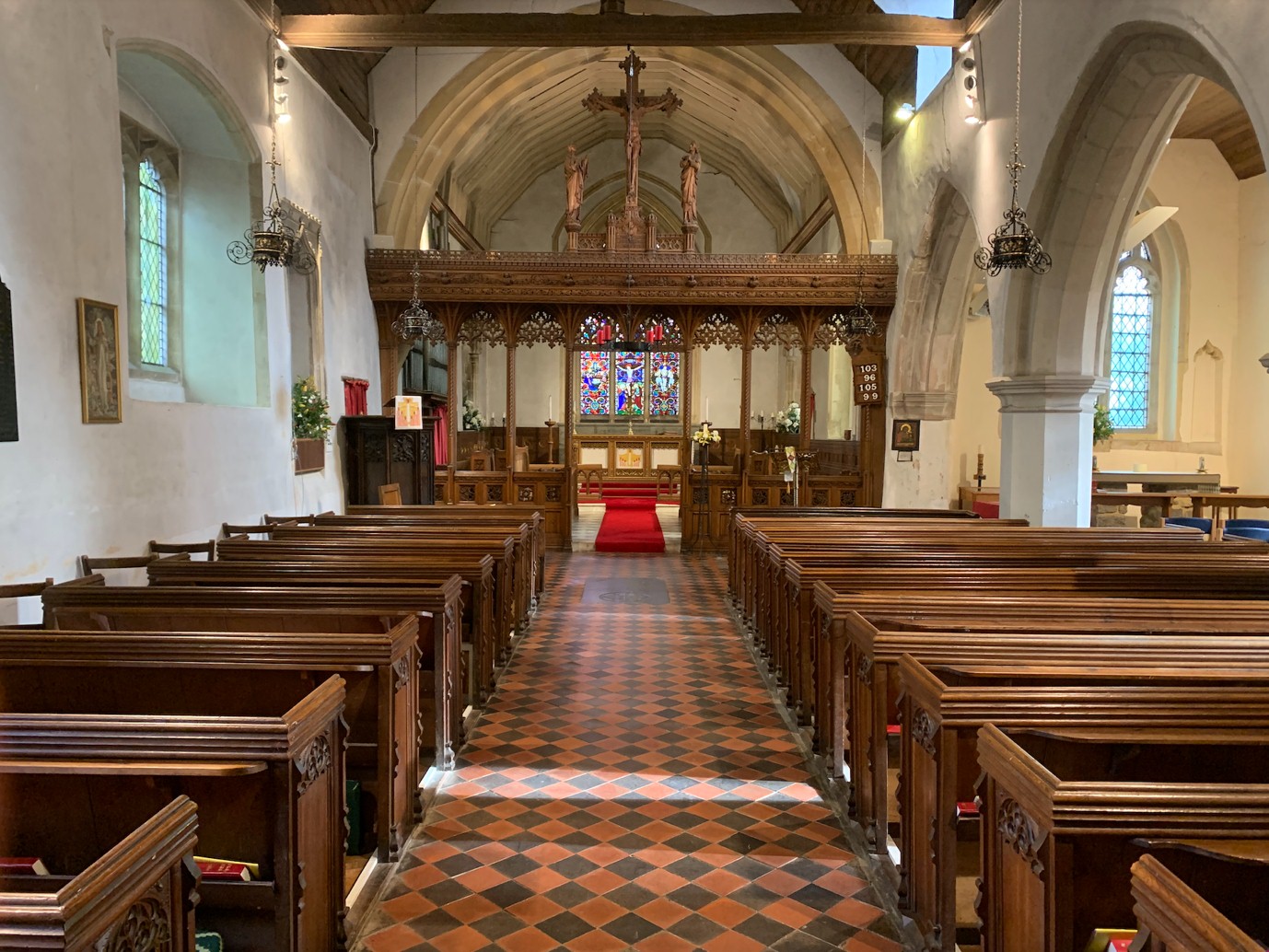
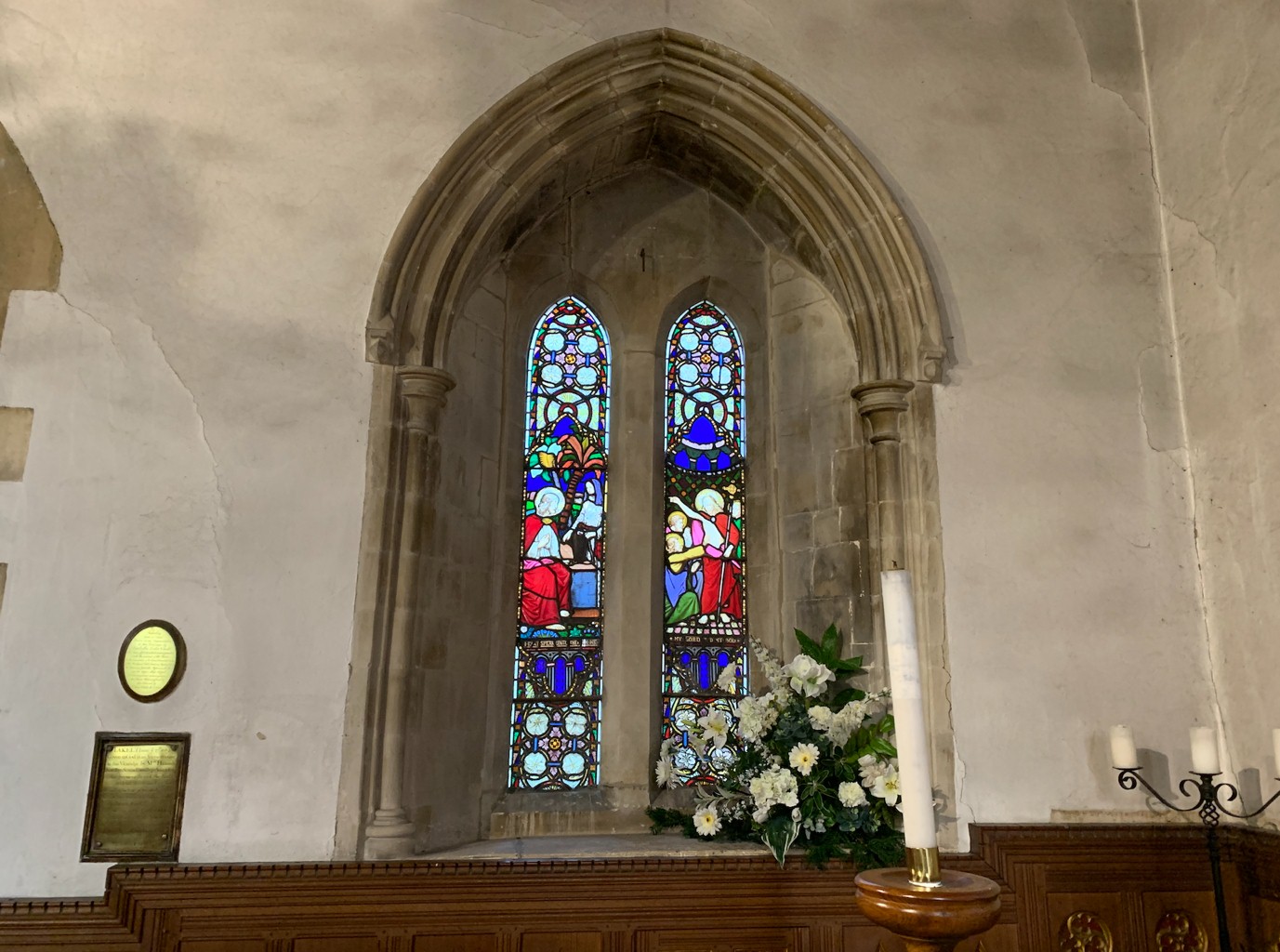
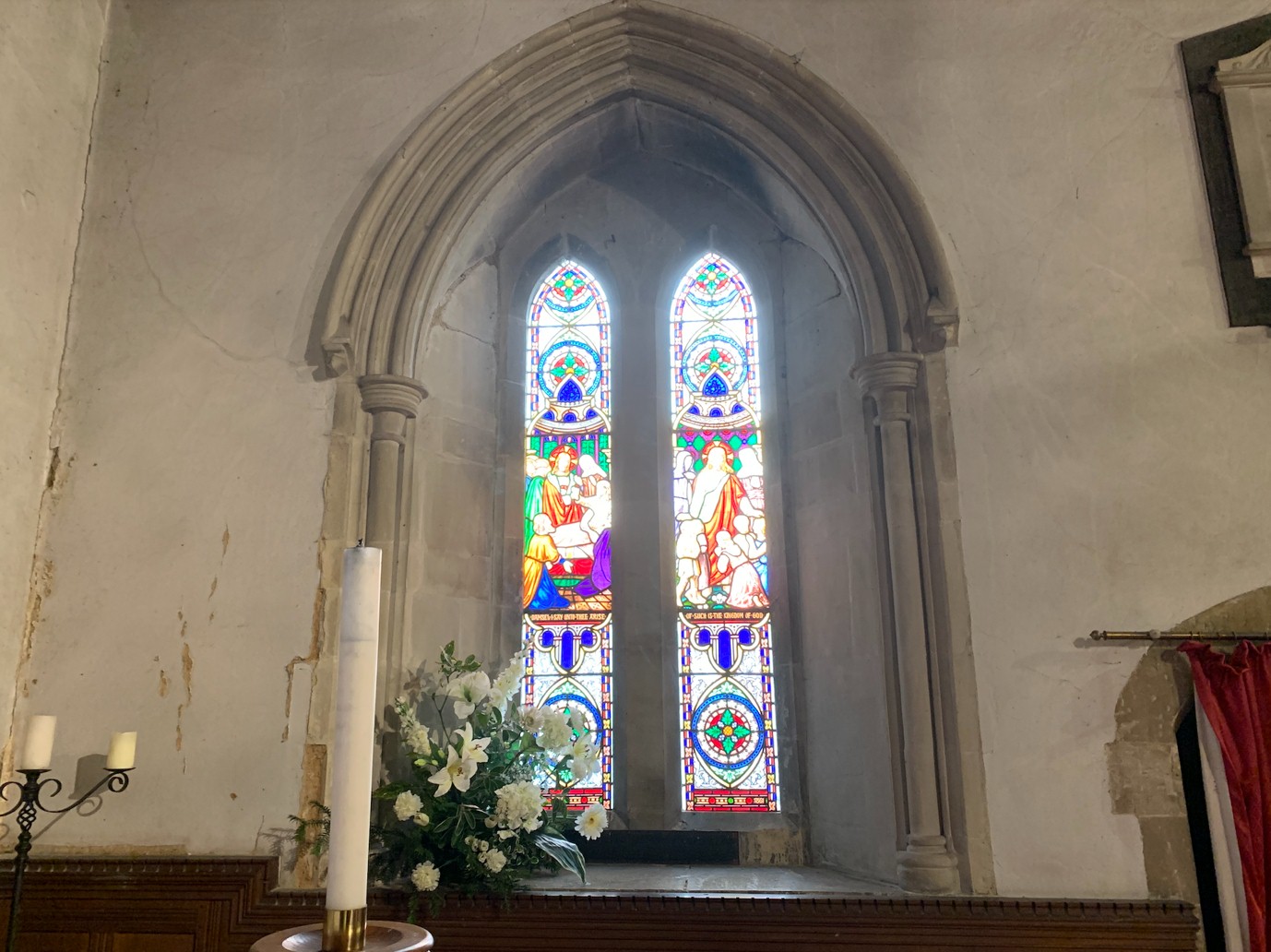
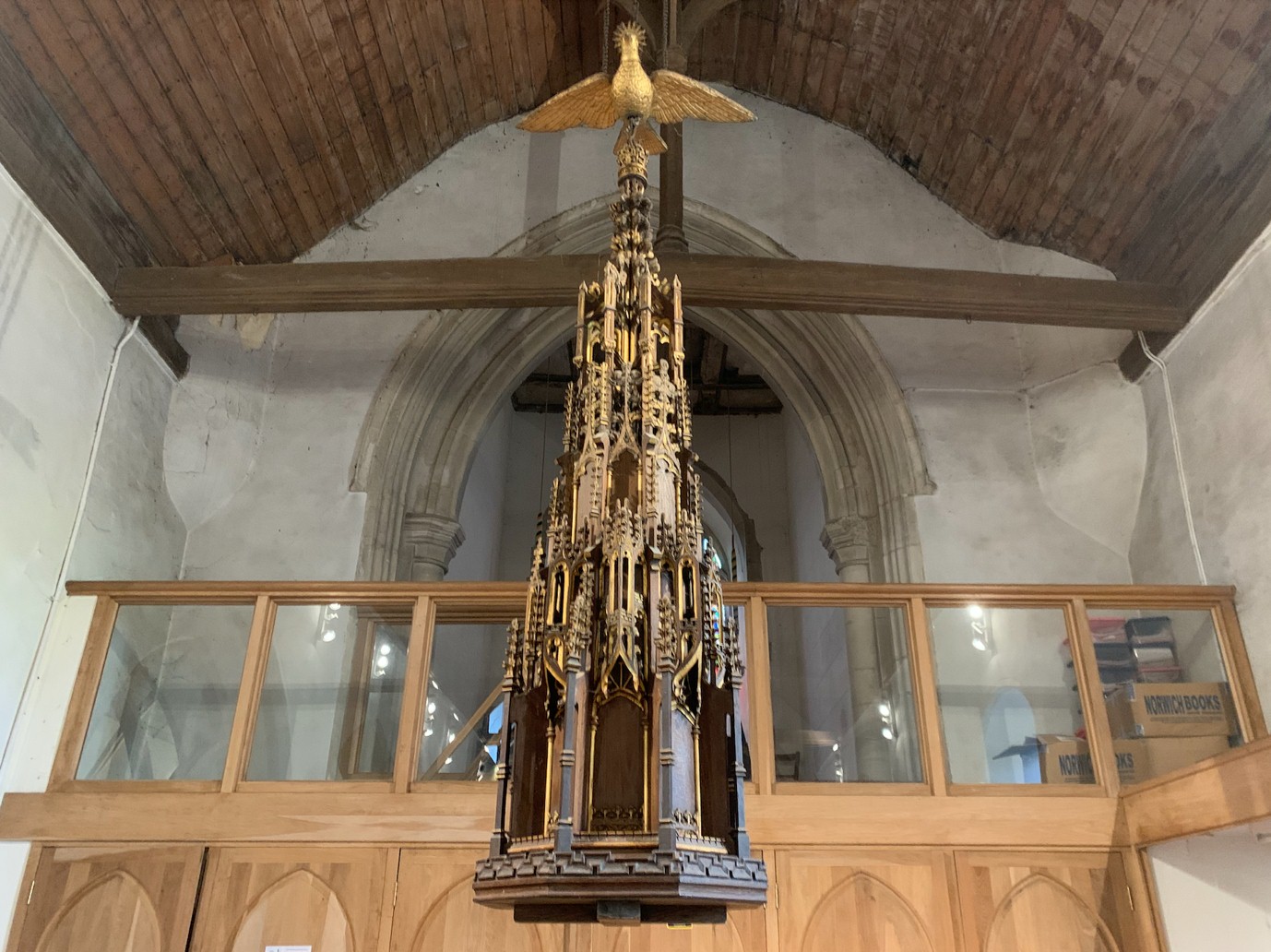
The 1400s. The south porch was added and also the tower that maybe replaced a wooden belfry over the western gable end. The chancel received its south-west and north-west windows (the latter reset in the 19th century vestry), and new east windows were placed in the chancel and south aisle. A document in the National Archives gives details of the retiling undertaken by the rector, the Bishop of London. This was almost certainly the roof of the chancel.
In the late 1400s, the large niche was placed in the north nave wall, probably as an altar to St Thomas by John Gyva, a Takeley-born man who became a wealthy London ironmonger. Gyva also left money to the high altar and to the altar of ‘our lady of piteie’. The nearby staircase was made to give access to the rood lift above the medieval screen, the pulpit was made, and the font received its elaborate carved cover.
The 1500s. Around 1500 the Tudor brick window was placed in the north nave wall. This may have been responsible for the problems in the north wall that the churchwardens gave as a reason for selling the chalice in 1548. The 1540s saw a transformation of the interior to cater for the worship of the Reformed church, with its scriptures and services in English and its dislike of pre-Reformation adornments and visual aids. By law, chantry chapels were abolished, stone altars were replaced by wooden tables, roods and their lofts were abolished, and wall paintings were limewashed over. The old order was restored during Mary’s reign (1553-58), but reversed under Elizabeth in 1559, although several parishes were not quick to obey. It seems that Takeley was one of these because there was the gift in 1567 for a light to burn before the great rood crucifix. One wonder how long this managed to survive.
The wills of Takeley people also tell us that by the end of the 1500s there was a vault under the chancel of the church. There is no record of by whom this was built, and indeed there is now no visible evidence that it was used until the mid 19th century.
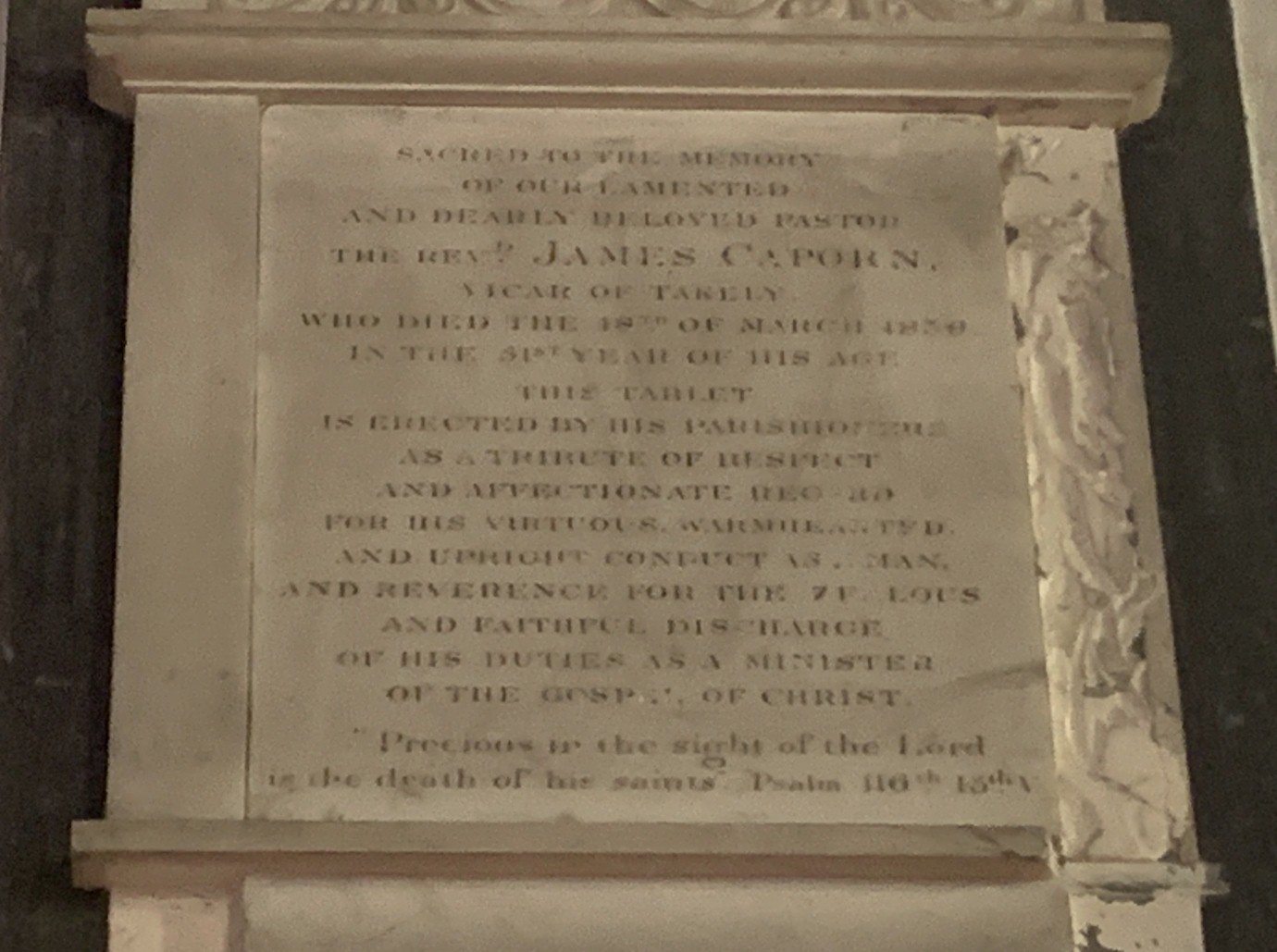
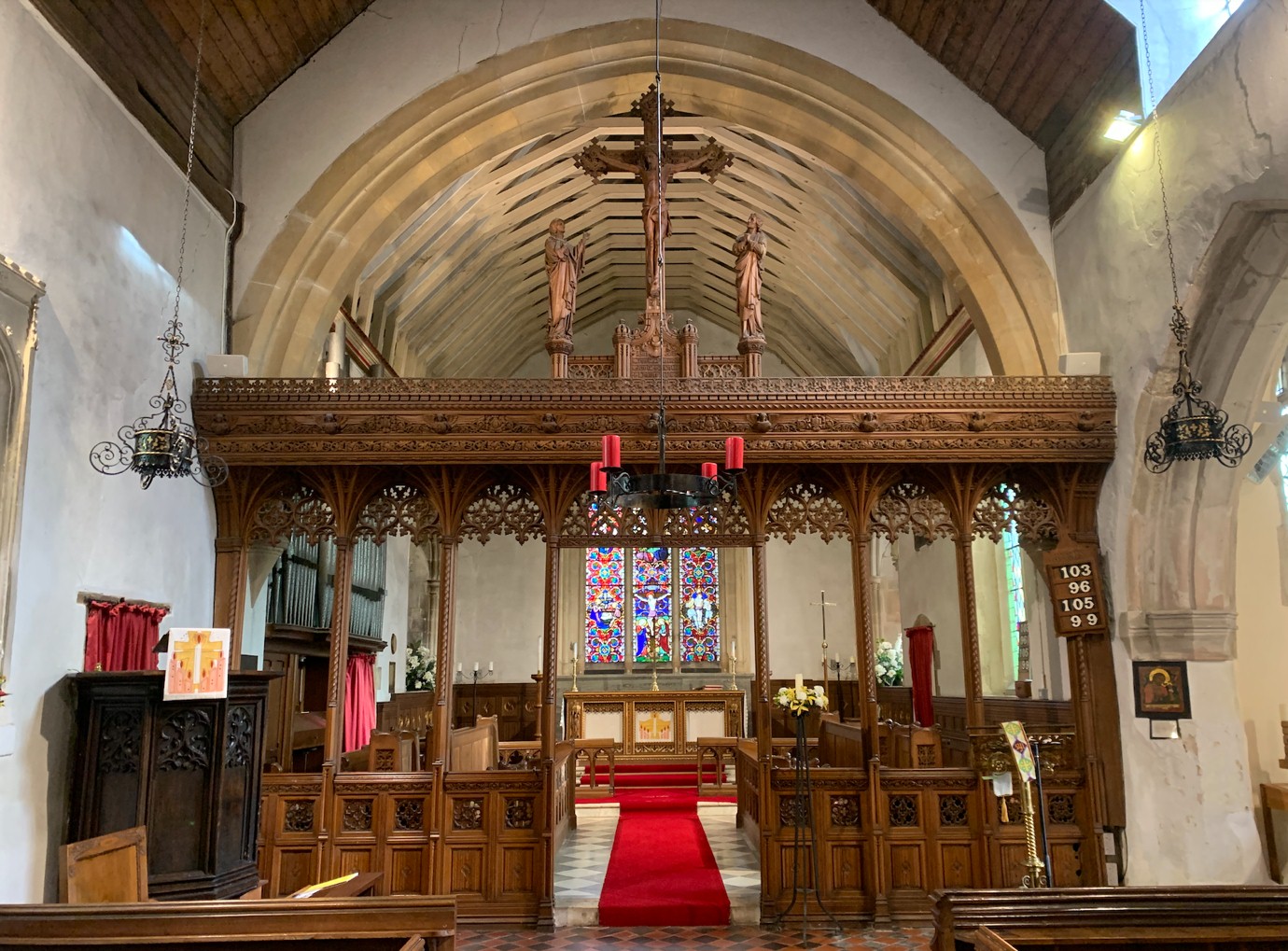
The 1600s. Further damage took place at the hands of the Puritans in their zeal to destroy what they thought to be superstitious images and inscriptions. This included the destruction of stained glass in our churches, as well as paintings, carvings and inscriptions. Churches were furnished for the plain, Prayer Book worship of the Church of England. The nave, aisle and chancel contained commodious box-pews, and many of them would have been owned or rented by the families who occupied them.
The medieval pulpit would have become part of a three-decker arrangement. At the west end was the musicians’ gallery and at the east end stood the simple communion table, which was maybe used three times a year.
1837-39. This was the brief period when the Rev James Caporn was vicar. His memorial plaque leads us to believe that he stood in the tradition of the Evangelical Revival in the Church of England and also that his brief ministry was much appreciated. In 1838 he instigated repairs which included modifications to the seating in the nave and aisle. The architect for this was William Cheffins of Bishops Stortford. This family firm had worked on the churches of Great and Little Hallingbury and at the former St Catherine’s Chapel in Hoddesdon. The ground plan of the completed work shows most of the nave and the chapel end of the aisle still furnished with haphazard box-pews, with northward-facing benches filling much of the aisle.
1847. Under the direction of the Rev Charles Clarke (vicar 1839-37), the font cover and pulpit were restored and a new reading desk was made, using antique carved oak panelling found in the church. Some of the box pews were replaced by open benches. This work was designed and executed by William Ollett Junior, who, with his father, were respected ecclesiastical wood and stone carvers in the City of Norwich where they lived and worked, They travelled further afield, however, and their craftsmanship may also be seen in nearby churches at Great Dunmow and Little Canfield, and at Erwarton in Suffolk.
1861. The interior underwent repairs which included the introduction of more benches to replace the box-pews, the cleaning and restoration of the arcade and walls, the renovation of the memorial gardens in the east window and the insertion of the O’Connor glass in the chancel south window. In addition, plain glass in a north window was inserted by Tadman of Dunmow. The porch was repaired and a new south door made and fitted. The architect is unknown.
1874. On 25th April, the chancel was reopened following a very thorough restoration to the design of Ewan Christian, an architect of national repute who designed and restored many churches nationwide, as well as the National Portrait Gallery. The contractor was Parmeter of Braintree. It was thought that the removal of an old beam, possibly the rood beam which often served as a tiebeam, had weakened the north wall of the nave. Was this possibly the weakening that led the churchwardens in 1547 to sell a chalice to mend a wall? The junction of the nave and chancel rooves were strengthened by the erection of a new chancel arch and a wall above it. Further support and stability was gained by the addition of the vestry/organ chamber to the north of the chancel.
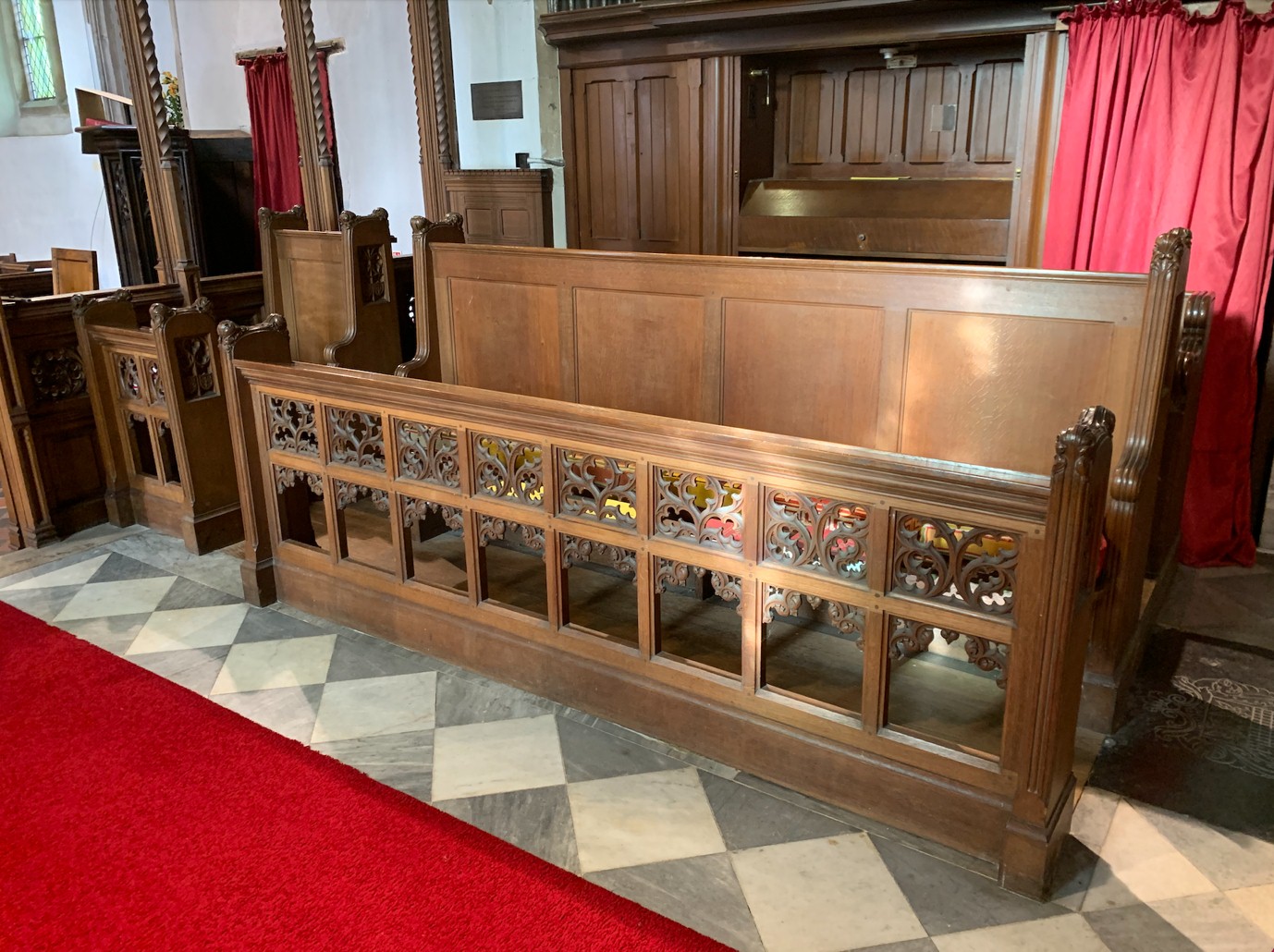
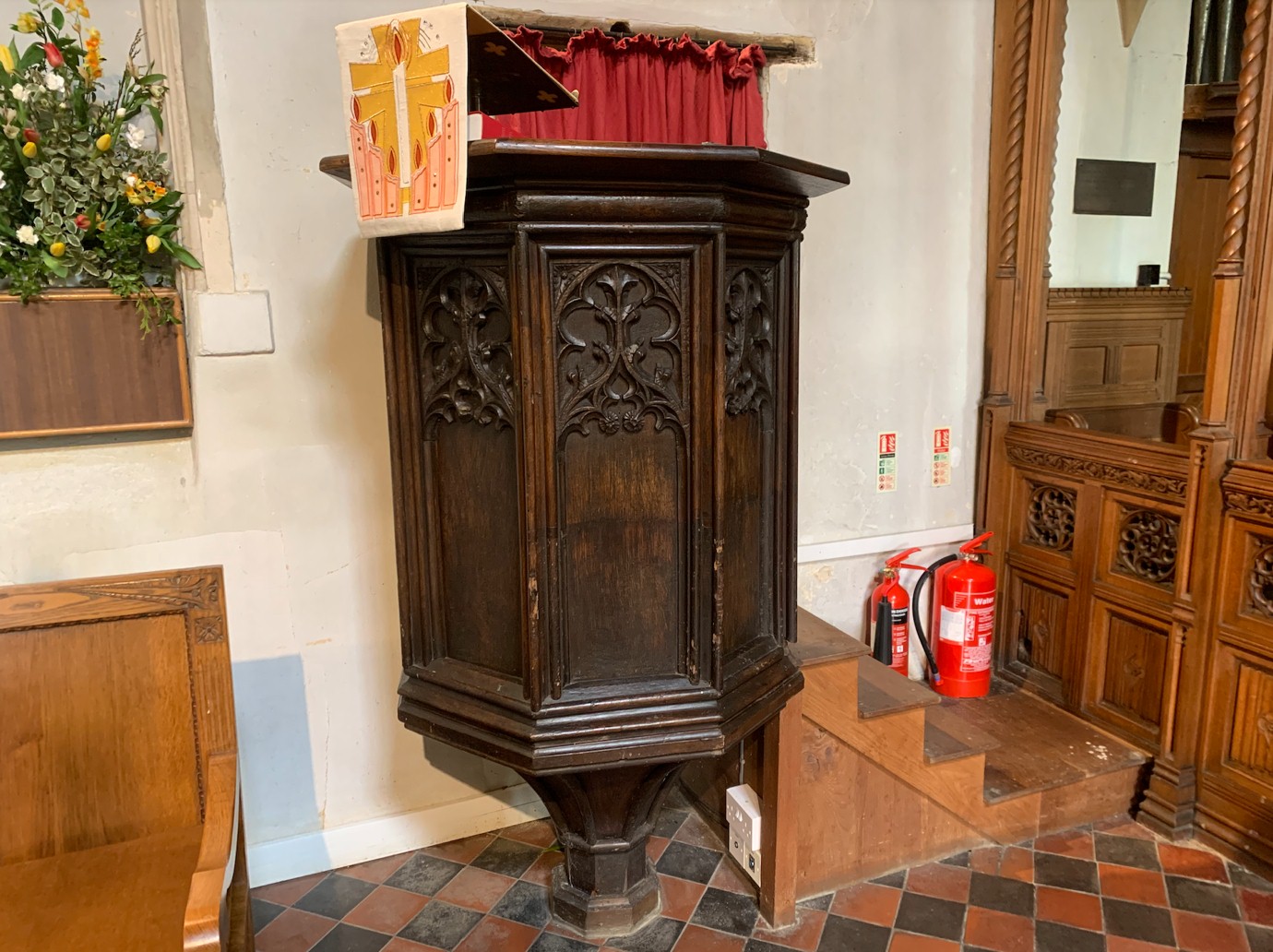
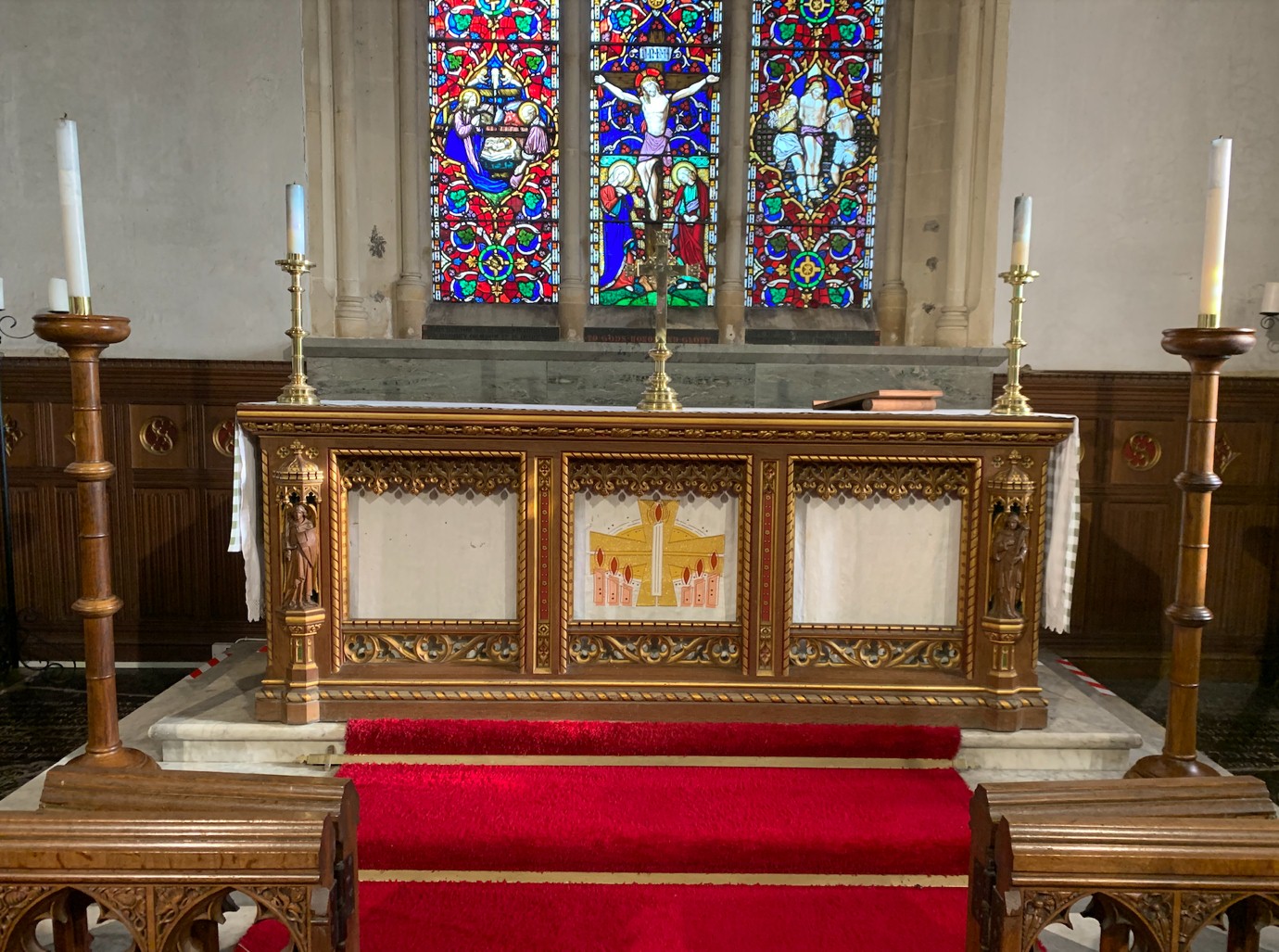
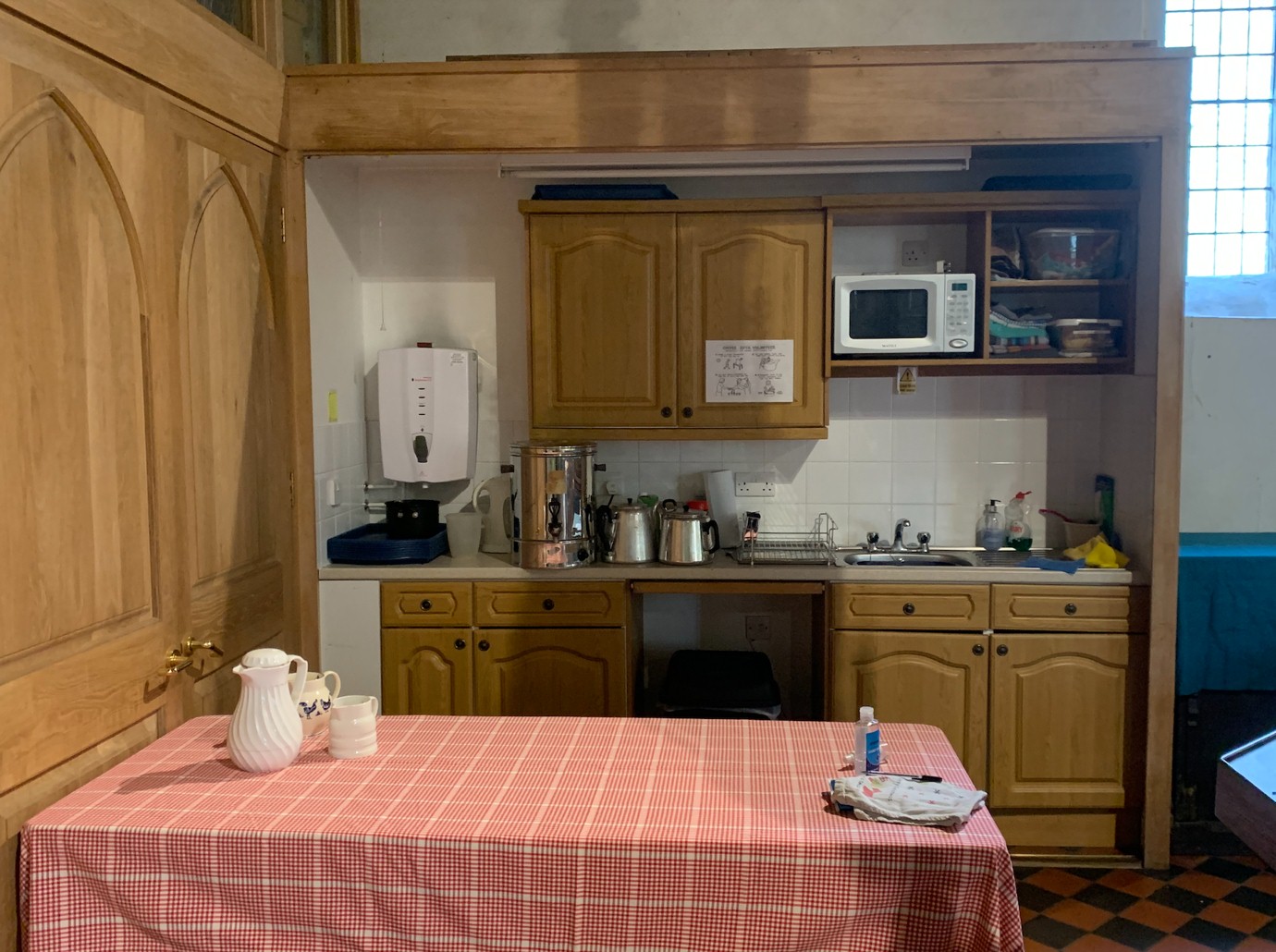
1902. On 9th October, Bishop H F Johnson of Colchester dedicated Takeley’s new Norman and Beard organ at a service where A Englefield Hull, Mus. Bac. F.R.C.O., directed the music and was assisted by a young female violinist.
1910. Miss Florence Ross, of Nevern Road, Earl’s Court and formerly of Hatfield Grange Farm at nearby Hatfield Broad Oak, presented the magnificent rood screen in memory of her parents and sister.
This superb piece of early 20th century craftsmanship was designed by George Halford Fellowes Prynne, a prominent and versatile architect of the period, whose work is rare in the Eastern counties. He created mighty and magnificent churches countrywide, including Holy Trinity Roehampton, St Alban’s Bournemouth, All Saints Dulwich and All Saints Elland, near Halifax. The son of Father George Rundle Prynne, the legendary Anglo-Catholic vicar of St Peter’s Plymouth, much of his work reflects this tradition. Takeley may well be his only commission in Essex, although he designed another beautiful screen at Rattlesden in Suffolk. At the dedication service on July 31st the choir was conducted by Mr J Cooper Smith, whose daughter played the organ, and the Bishop of St Alban’s preached. The new screen cost in the region of £500.
1914. The further generosity of Miss Ross provided some £1500 for the transformation of the chancel interior, again to the design of Fellowes Prynne. New pavements were laid and new stalls were made for the clergy and choir, the sanctuary walls were lined with panelling and a handsome new altar became the church’s focal point, with a small mensa-slab set into it. This was the year when the Diocese of Chelmsford was formed, and the Bishop of Chelmsford dedicated the new work on 26th July. At this service the choir was robed in cassocks and surplices for the first time.1928. The timber-clad ‘Herts spike’ was struck by lightning and was replaced by a taller pyramid tower roof with a shorter spirelet finial. Evidence exists that other strikes may have occurred in the 1880s.
1954-67. A major restoration took place in stages under the direction of the Stratford architect Douglas Thomerson. In 1964 the chancel was redecorated, plaster was removed from the south aisle ceiling and the church was entirely reroofed. 1966 saw the reglazing of all the plain glass windows, internal repairs, replastering and redecoration of the nave and aisle. The south aisle received a new floor and the pulpit was equipped with new oak stairs. In 1967 the lady chapel was refurbished, repaved with stone and equipped with a new altar of York stone.
2003-05. The west end was re-ordered to provide an entrance vestibule, vestries, kitchen and ringer’s gallery, to the design of John Glanfield and Partners. The work was carried out by Gordon Sylvester and Sons, a local firm.
